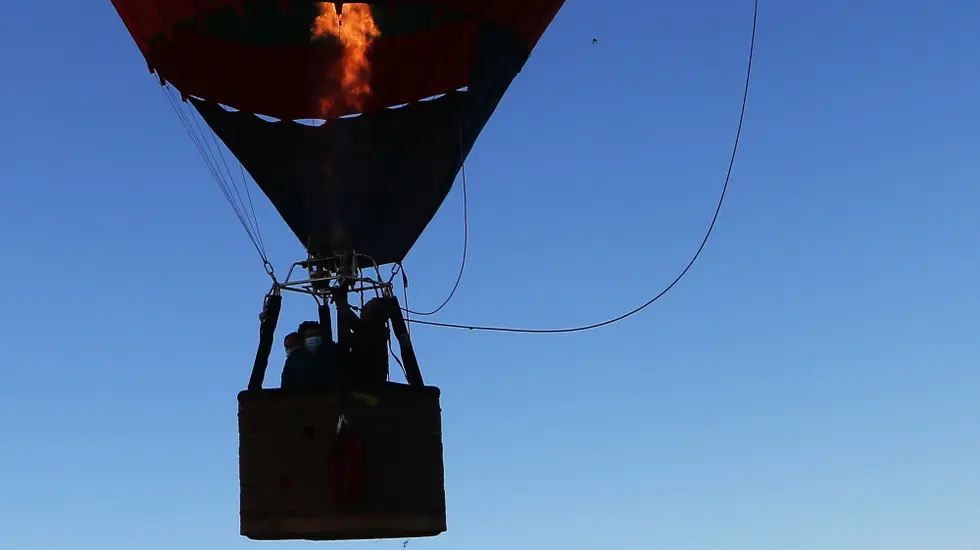Final report highlights repeated “underestimation of risks”
An investigation into a fatal accident in April involving a hot-air balloon near the Alqueva reservoir, in the municipality of Mourão, Évora district, has pointed to safety and pilot failures that culminated in an attempt to ditch in the Alqueva reservoir that resulted in the death of a passenger.
The final report of the Office for the Prevention and Investigation of Aircraft Accidents and Railway Accidents (GPIAAF), has concluded that safety rules and procedures were not respected or complied with by the operator (Windpassenger), in terms of preparing passengers for a possible ditching, and that there were no life jackets on board – something that is not required by law.
“From the information and data gathered by the investigation, the probable cause for the pilot’s request to passengers to assist in the landing manoeuvre, placing the passenger who complied with the request in the unsafe condition that resulted in his death, was due to the contact of the balloon basket with the water and the consequent perception of the need for external control of it,” explains the GPIAAF report.
According to the investigation, the 55-year-old passenger who got out of the balloon on the morning of 28 April 2024 and died of “asphyxiation by drowning” knew how to swim and entered the water with his shoes on and wearing tracksuit trousers and a T-shirt, adding that the victim “got out of the basket to assist during the manoeuvre to tie the balloon” – which was being dragged by the wind towards the water – and was later found lifeless on the surface of the water.”
In the balloon model manual, under the heading ‘Briefing Passengers’, there is the warning: “There is a risk of injury if an inexperienced person (e.g. passenger) is asked to assist in handling the balloon during take-off manoeuvres or after landing. If you do so, always provide that person with detailed instructions that include ways to minimise the associated risks.“
The report emphasises: “The passengers were not wearing flotation equipment, nor was it available on board. In the pre-flight briefing, the possibility of ditching was not foreseen by the pilot or detailed to the passengers. The ditching scenario was not taken into account by preparing the passengers in advance for this eventuality and equipping the balloon with individual flotation devices.”
According to the report’s authors, the “selection of the landing site by the (65-year-old) pilot, close to the river bank (north bank) with a prevailing north-westerly wind (from the direction of the river)” and what they call “a conservative assessment of the fuel on board by the pilot, who did not decide in good time to discontinue the landing and cross the river before the basket came into contact with the water”, contributed to the basket’s contact with the reservoir.
“The decision to ask for volunteers from among the passengers to descend from the balloon basket and assist in its manoeuvre, not being equipped with life jackets, instead of adopting the procedure laid down in the manual of using the basket as a raft and awaiting the arrival of aid, contributed to an underestimation of the risk on the part of the pilot,” states the GPIAAF.
This underestimation of risk was “relevant both in the initial planning of the operation in view of the route and wind conditions, as well as in the situation in which the balloon found itself when it hit the water, given the passengers’ unpreparedness for this,” it goes on. “The pilot’s underestimation of the risk may have been due to shortcomings in training, coaching and the organisation’s verification that the pilot’s skills in emergency procedures were maintained.”
The investigation also points to failings on the part of the operator itself.
“The combination of circumstances that led to the loss of a passenger’s life, the various precursors and risks in the area would necessarily have to be taken into account by the operator in its risk analysis of the operation,” emphasises the GPIAAF. “It is up to the operator to collect the relevant data and act on deviations, training their crews to deal with these events in isolation or in combination.”
For readers who don’t remember this incident, it came at the tail end of a trip that had begun in the in Monsaraz. PJ police opened their own investigation at the time. It is unclear whether any further action will be taken.
Source material: LUSA


























